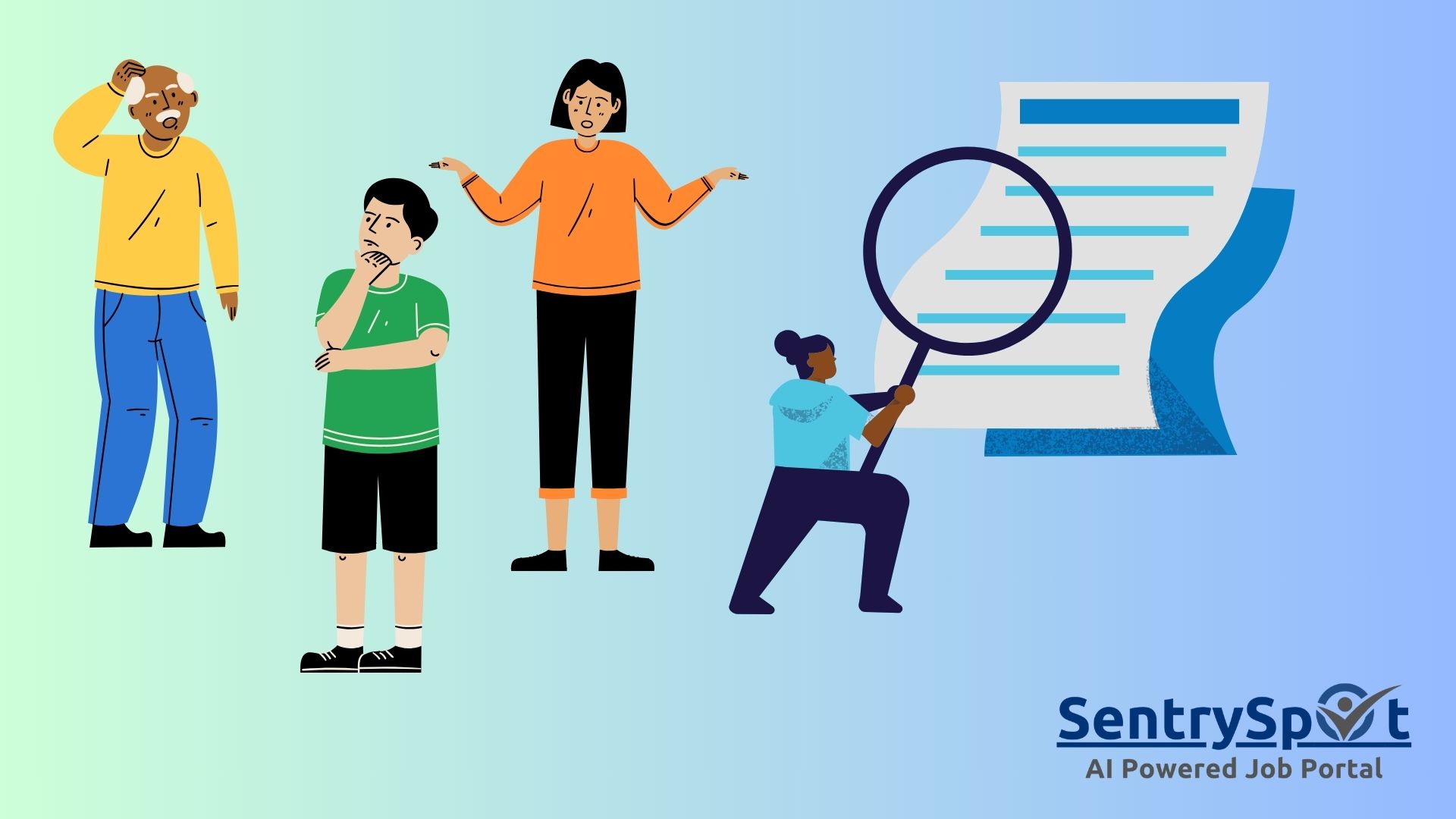How AI Analyzes Job Descriptions to Optimize the Recruitment Process
In the fast-paced world of recruitment, locating the perfect candidate for a job can be a challenging task. Recruiters and hiring managers must sift through hundreds, and often thousands, of applications for a single position. Traditional methods of manual resume screening and job description analysis are not only time-consuming but also prone to errors and biases.
Enter Artificial Intelligence (AI), a game-changer in the recruitment landscape. AI-powered tools are transforming the way job descriptions are analyzed and optimized, enhancing the efficiency, accuracy, and fairness of the recruitment process. This blog delves into how AI analyzes job descriptions to optimize recruitment, backed by compelling statistics, data, and case studies.
The Role of AI in Analyzing Job Descriptions
AI leverages advanced algorithms and machine learning techniques to analyze and optimize job descriptions. This process involves several key steps:
- Keyword Analysis: AI tools scan job descriptions for relevant keywords and phrases that align with the job role and industry.
- Skills Matching: AI identifies the skills required for the job and matches them with candidates’ resumes.
- Bias Detection: AI detects and removes biased language from job descriptions to promote diversity and inclusion.
- Optimization for ATS: AI ensures that job descriptions are optimized for Applicant Tracking Systems (ATS) to improve the screening process.
- Data Insights: AI provides data-driven insights into job market trends and candidate preferences.
Benefits of AI in Job Description Analysis
1. Improved Efficiency
One of the primary benefits of AI in job description analysis is improved efficiency. Traditional methods of manually writing and reviewing job descriptions are time-consuming and labor-intensive. AI-powered tools automate this process, allowing recruiters to focus on more strategic tasks. By automating the analysis of job descriptions, AI frees up valuable time for recruiters, enabling them to engage more with candidates and make better hiring decisions.
2. Enhanced Accuracy
AI tools are designed to minimize errors and improve the accuracy of job descriptions. They analyze vast amounts of data to identify the most relevant keywords and skills, ensuring that job descriptions are precise and comprehensive.
3. Reduction of Bias
Bias in job descriptions can deter qualified candidates from applying and negatively impact diversity within an organization. AI-powered tools analyze job descriptions for biased language and suggest neutral alternatives. By removing biased terms and phrases, AI promotes inclusivity and helps organizations build a more diverse workforce.
4. Optimization for ATS
Applicant Tracking Systems (ATS) are widely used by organizations to screen resumes and applications. However, poorly written job descriptions can hinder the effectiveness of ATS. AI optimizes job descriptions for ATS by ensuring they contain the right keywords and phrases. AI optimization increases the chances of job descriptions being accurately parsed by ATS, improving the overall recruitment process.
5. Data-Driven Insights
AI provides recruiters with valuable data-driven insights into job market trends, candidate preferences, and competitive analysis. These insights enable recruiters to make informed decisions and tailor job descriptions to attract top talent. AI can analyze job market trends to identify emerging skills and suggest relevant keywords for job descriptions. This ensures that job descriptions are up-to-date and aligned with current industry standards.
Case Studies
Case Study 1: Textio
Company: Textio
Challenge: Enhancing job descriptions to attract a diverse pool of candidates.
Solution: Textio developed an AI-powered platform that analyzes job descriptions and suggests language improvements to reduce bias and enhance inclusivity.
Results: Companies using Textio saw a 23% increase in applications from underrepresented groups. The platform’s ability to identify and replace biased language significantly improved the diversity of candidate pools.
Case Study 2: LinkedIn
Company: LinkedIn
Challenge: Improving the accuracy and relevance of job descriptions.
Solution: LinkedIn integrated AI algorithms into their job posting platform to analyze job descriptions and provide data-driven recommendations for keyword optimization.
Results: Job posts optimized with AI received 50% more applications and 25% more qualified candidates. The AI-driven insights helped recruiters create more precise and compelling job descriptions.
Case Study 3: HireVue
Company: HireVue
Challenge: Enhancing the efficiency of the recruitment process.
Solution: HireVue implemented AI-powered tools to analyze job descriptions and match them with candidate profiles based on skills and experience.
Results: HireVue clients experienced a 30% reduction in time-to-hire and a 20% increase in the quality of hires. The AI-driven matching process ensured that job descriptions were accurately aligned with candidate qualifications.
Statistics and Data
The effectiveness of AI in job description analysis is supported by various statistics and data points:
- Application Increase: A survey by CareerBuilder found that job descriptions optimized with AI saw a 40% increase in application rates.
- Bias Reduction: Research by Gender Decoder indicates that job descriptions analyzed by AI showed a 30% reduction in gender-biased language.
- Efficiency Gains: According to a study by Deloitte, AI can reduce the time spent on writing and reviewing job descriptions by up to 50%.
- ATS Optimization: A report by Jobvite states that job descriptions optimized for ATS using AI are 3 times more likely to result in successful candidate matches.
The Future of AI in Job Description Analysis
As AI technology continues to evolve, its capabilities in job description analysis are expected to grow. Future developments may include more sophisticated natural language processing algorithms, enhanced customization features, and deeper integration with other HR tools.
One potential area of growth is the use of AI to predict job market trends and suggest emerging skills that should be included in job descriptions. Additionally, AI may incorporate machine learning models that provide more nuanced feedback based on the specific preferences of different industries and job roles.
Conclusion
In the fast-paced world of hiring, finding the right person for a job can be tough. AI-powered tools are improving the way job descriptions are checked and improved, making hiring more efficient, accurate, and fair. Artificial Intelligence (AI) is changing the hiring process. AI-powered tools are improving the way job descriptions are checked and improved, making hiring more efficient, accurate, and fair. This blog explains how AI checks job descriptions to improve hiring. It gives strong evidence, data, and real examples.




